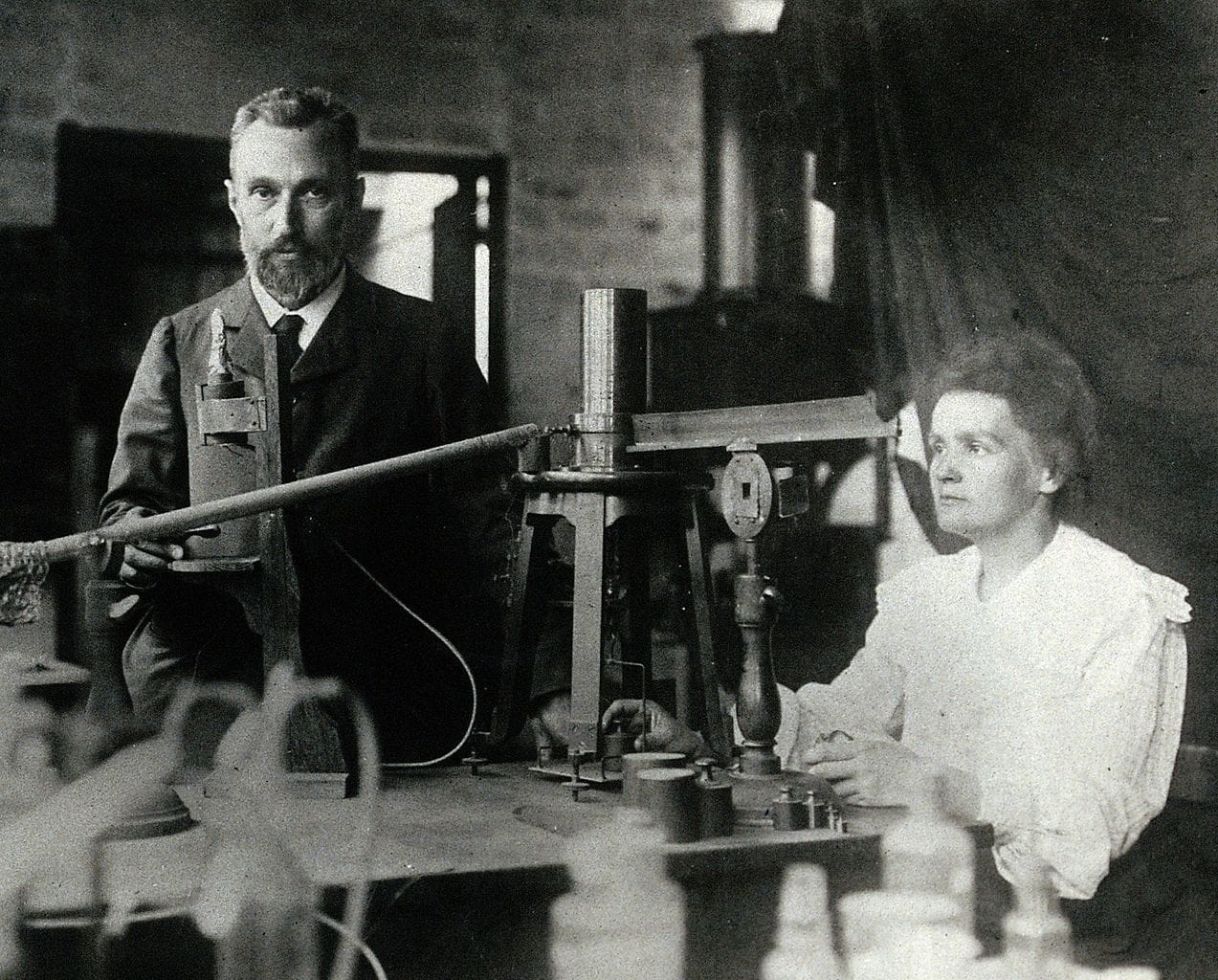polonium

Polonium is a chemical element with atomic number 84 and the symbol Po. It is a highly radioactive metal. Once used widely in various commercial applications, such uses have largely been abandoned out of safety concerns. Its use today is primarily as a source for alpha radiation in laboratories and as a heat source for thermoelectric generators, such as those used for satellites and deep-space probes. The name comes from polon[ia] (Poland) + -ium.
The element was discovered by Pierre and Marie Curie in 1898 and named for Marie’s native land. From the published announcement of their discovery:
Nous croyons donc que la substance que nous avons retirée de la pechblende contient un métal non encore signalé, voisin du bismuth par ses propriétés analytiques. Si l'existence de ce nouveau métal se confirme, nous proposons de l'appeler polonium, du nom du pays d'origine de l'un de nous.
(We therefore believe that the substance that we removed from the pitchblende contains a metal not yet reported, close to bismuth in its analytical properties. If the existence of this new metal is confirmed, we propose to call it polonium, after the country of origin of one of us.)
At the time, Poland did not exist as an independent state, partitioned into three parts ruled by Russia, Germany, and Austria-Hungary. Curie hoped that naming the element for her native land would raise awareness of Poland’s political situation.
Polonia is a post-classical Latin name for the land, appearing in the eleventh century and widely used in Latin texts since.
Sources:
Curie, Pierre and Marie Curie. “Sur une substance nouvelle radio-active, contenue dans la pechblende.” Comptes Rendus Hebdomadaires des Séances de l'Académie des Sciences, 127, July–December 1898, 175–178 at 177. HathiTrust Digital Archive.
Miśkowiec, Pawel. “Name Game: The Naming History of the Chemical Elements: Part 2—Turbulent Nineteenth Century.” Foundations of Chemistry, 8 December 2022. DOI: 10.1007/s10698-022-09451-w.
Oxford English Dictionary, third edition, September 2006, s.v. polonium, n., polony, adj. & n.2.
Image credit: Unknown photographer, c. 1904. Wikimedia Commons. Public domain image.